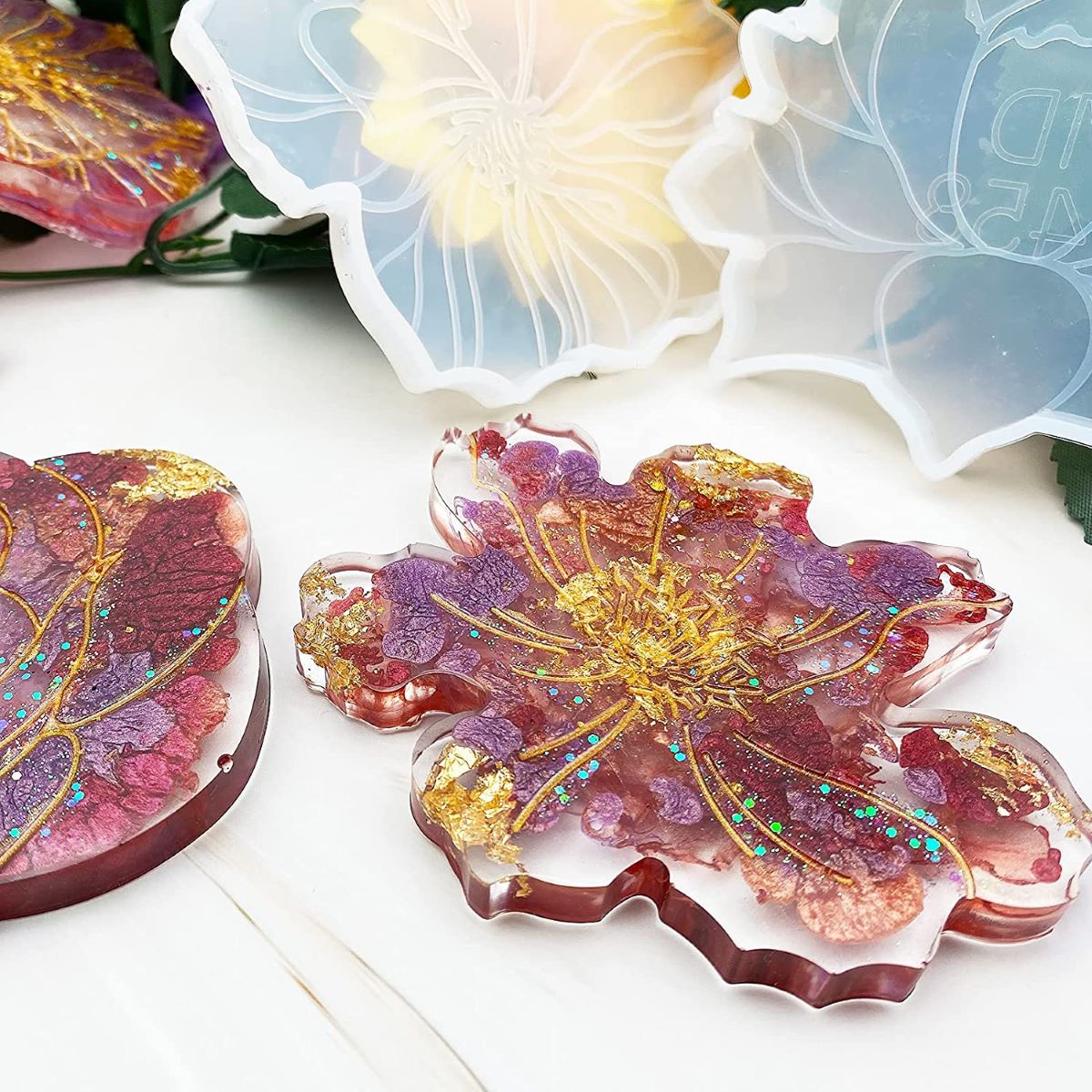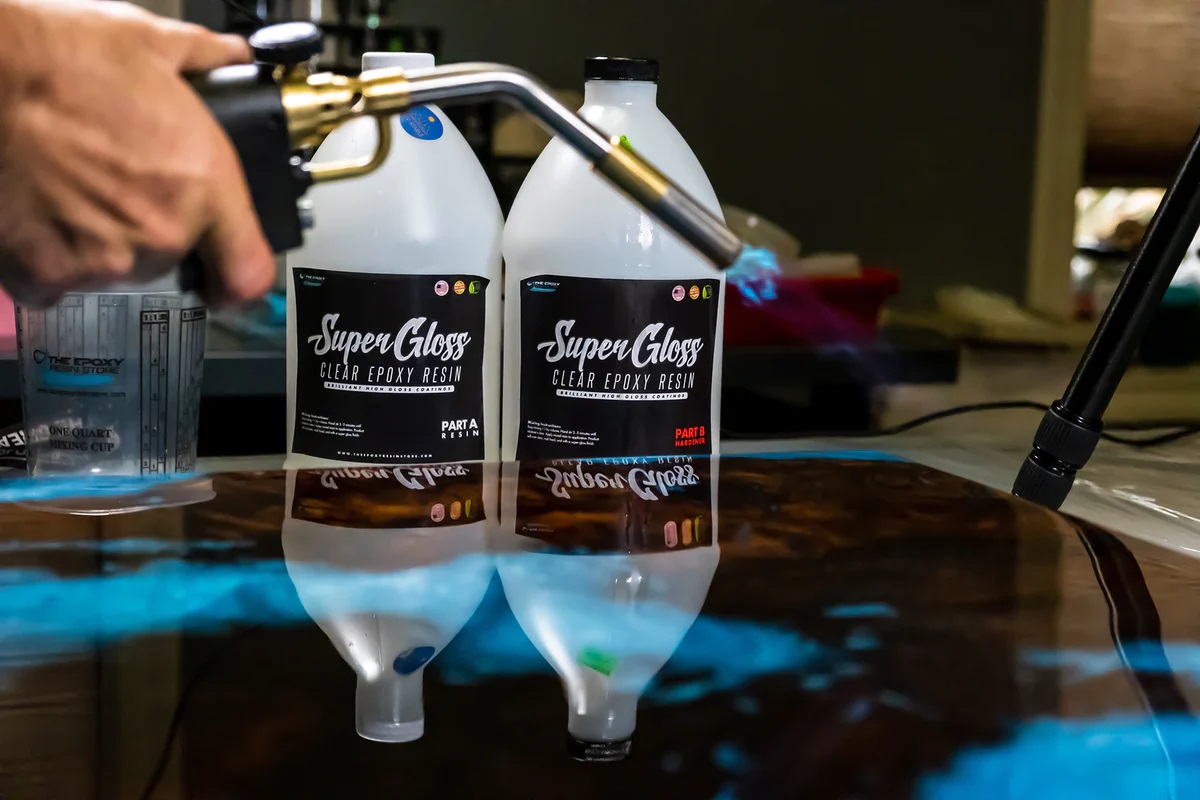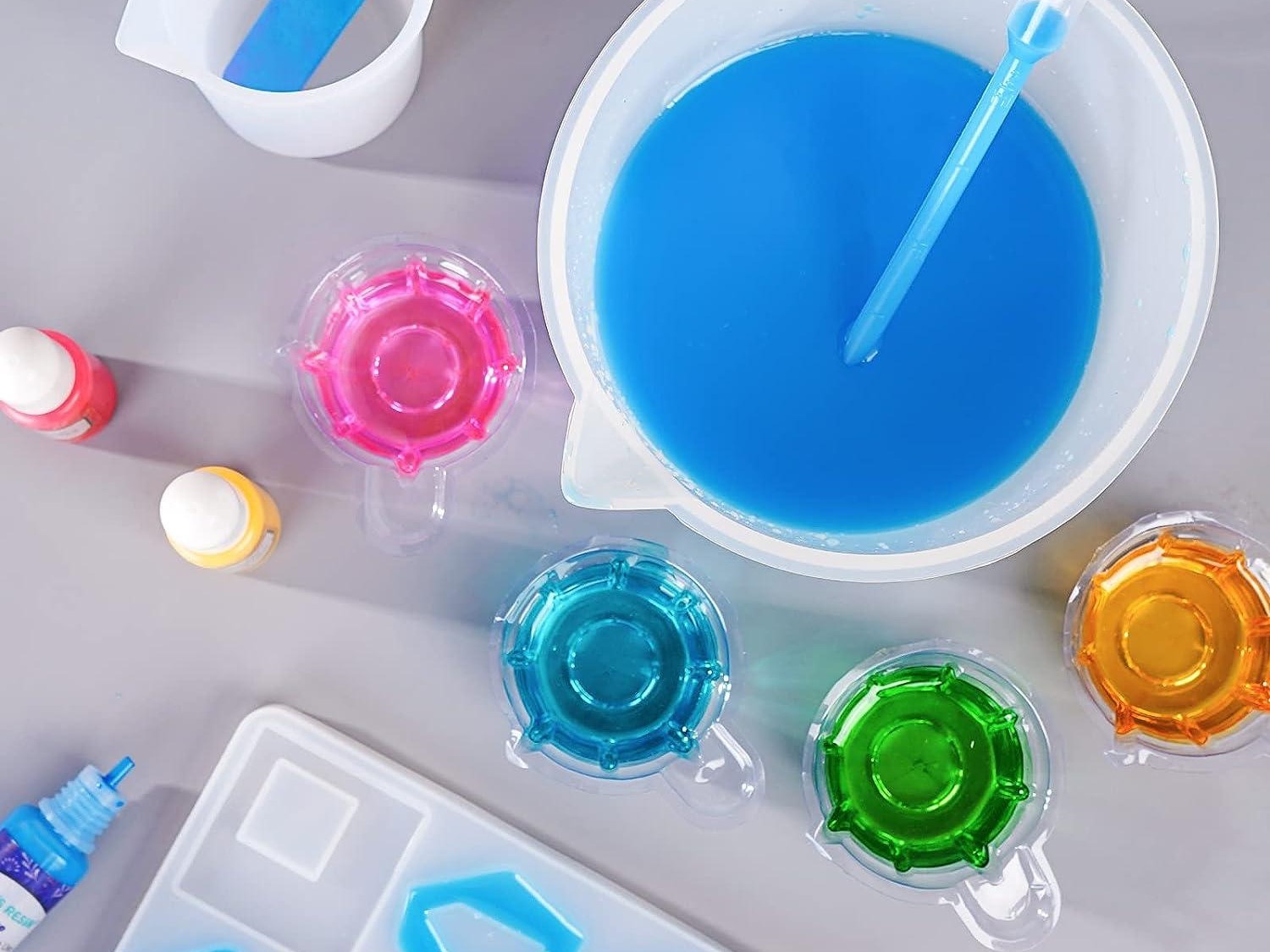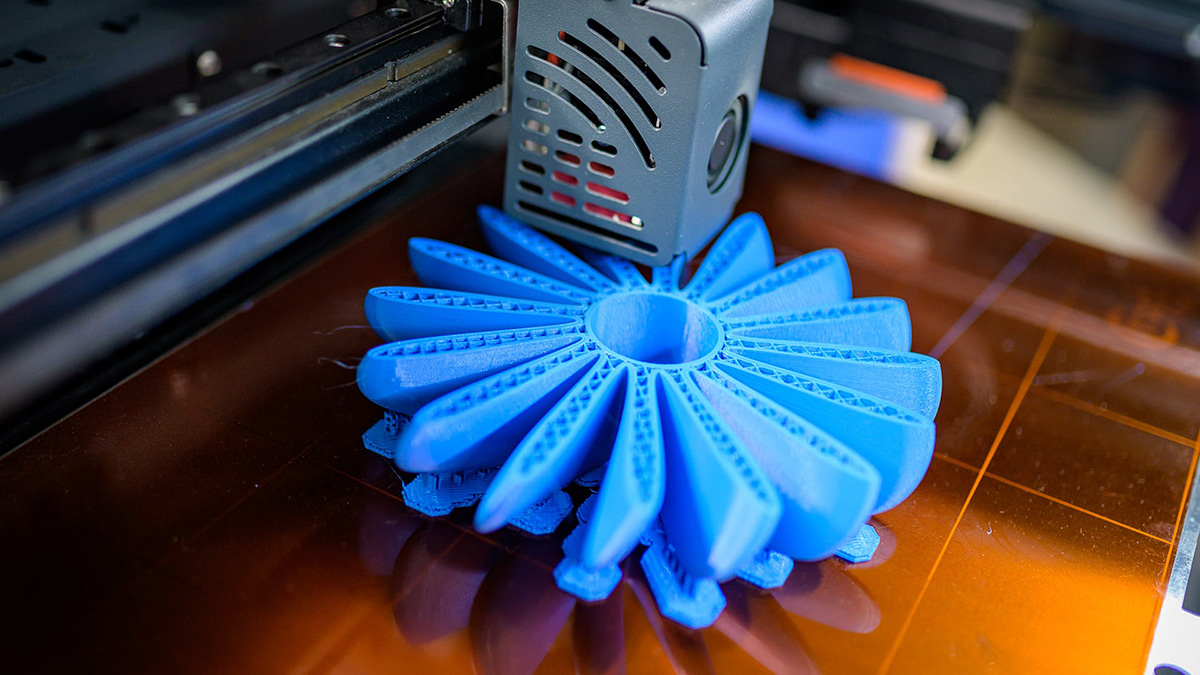

Articles
How To Store Resin Molds
Modified: December 7, 2023
Discover the best way to store resin molds with our informative articles. Keep your molds safe and organized for future projects.
(Many of the links in this article redirect to a specific reviewed product. Your purchase of these products through affiliate links helps to generate commission for Storables.com, at no extra cost. Learn more)
Introduction
Welcome to the world of resin molds! Whether you’re a beginner or an expert in resin crafting, proper storage and care of your precious molds are essential for their longevity and continued usability. Resin molds come in various shapes and sizes, designed to create beautiful and intricate designs for jewelry, coasters, decorations, and more. To ensure that your resin molds stay in excellent condition and ready for your next creative project, it’s crucial to follow the right storage techniques.
In this article, we will explore the best practices for storing resin molds. From choosing the right storage space to cleaning, handling, and protecting your molds, we’ll cover everything you need to know to preserve the quality of your molds and extend their lifespan.
So let’s dive into the wonderful world of resin mold storage and discover how to keep your valuable tools in excellent shape!
Key Takeaways:
- Proper storage and care of resin molds are crucial for their longevity. Choose the right storage space, clean and prepare the molds, and use protective measures for long-term storage to preserve their quality.
- Regular maintenance and checks are essential for keeping resin molds in good shape. Inspect for damage, clean as needed, and follow manufacturer’s instructions to ensure the molds remain in excellent condition.
Read more: How To Store Resin
Choosing the Right Storage Space
When it comes to storing resin molds, it’s important to choose a suitable storage space that provides optimal conditions for their preservation. Here are some factors to consider when selecting the right storage space for your resin molds:
- Temperature and Humidity: Resin molds are sensitive to extreme temperatures and humidity levels. It’s best to store them in a cool, dry place to avoid any damage or warping. Avoid storing them in areas prone to high humidity, such as basements or bathrooms.
- Light Exposure: Resin molds can be sensitive to prolonged exposure to direct sunlight or UV rays. Look for a storage space that is away from windows or invest in UV-resistant containers or boxes to protect your molds from light damage.
- Dust and Debris: It’s crucial to store your resin molds in a clean space to prevent dust and debris from settling on them. Choose a storage area that is free from excessive dust or invest in storage containers with tight-fitting lids to keep your molds dust-free.
- Space Availability: Consider the size and quantity of your resin molds when selecting a storage space. Ensure that the space you choose can accommodate your molds without overcrowding, which could lead to damage or difficulty in accessing them.
Once you have identified a suitable storage space, it’s time to move on to the next step: preparing your resin molds for storage.
Cleaning and Preparing Resin Molds for Storage
Before storing your resin molds, it’s essential to clean and prepare them properly to ensure their longevity. Follow these steps to get your molds ready for storage:
- Remove any Residue: Start by carefully removing any leftover resin or residue from the molds. You can gently scrape off the excess resin using a plastic scraper or your fingers. Be cautious not to scratch or damage the mold in the process.
- Wash with Mild Soap and Water: Once the excess resin is removed, wash the molds with mild soap and water. Use a soft sponge or brush to clean the molds thoroughly, paying extra attention to any crevices or intricate designs. Rinse them well to remove any soap residue.
- Dry Completely: After washing, ensure that the molds are completely dry before storing them. Use a clean cloth or allow them to air dry in a well-ventilated area. Moisture can lead to mold or degradation of the molds, so it’s crucial to store them only when completely dry.
- Apply a Mold Release Agent: For certain types of resin molds, especially those with intricate details or complex shapes, applying a mold release agent can be beneficial. This will help prevent the molds from sticking together or damaging their delicate details during storage. Follow the instructions provided with the mold release agent and ensure that it’s completely dry before storing the molds.
By following these steps, you are ensuring that your resin molds are clean, dry, and ready for storage. Proper cleaning and preparation play a vital role in preserving the quality and usability of your molds in the long run.
Proper Handling and Organization of Resin Molds
Once your resin molds are clean and prepared, it’s essential to handle and organize them properly to prevent any damage or misplacement. Here are some tips for proper handling and organization of resin molds:
- Handle with Care: Resin molds can be delicate and easily damaged, especially those with intricate designs. When handling the molds, make sure to handle them with care, avoiding any unnecessary force or pressure.
- Avoid Sharp Objects: When organizing or storing your resin molds, avoid placing them near sharp objects or edges that could potentially scratch or damage them. Opt for smooth surfaces or use dividers or trays to keep the molds separated and protected.
- Labeling: If you have a collection of resin molds, labeling can be a game-changer for organization. Use labels or tags to identify the type, size, and design of each mold. This will make it easier to locate specific molds when needed and minimize the risk of misplacing or confusing similar-looking molds.
- Invest in Storage Containers: To keep your resin molds organized and protected, consider investing in storage containers specifically designed for resin molds. These containers often have compartments or slots to store individual molds securely, preventing them from shifting or getting damaged.
- Stacking and Nesting: If you have limited storage space, stacking and nesting your resin molds can be a space-saving solution. However, ensure that the molds are sturdy enough to handle stacking without warping or deformation. Avoid stacking too many molds on top of each other to prevent any unnecessary pressure.
- Create a Dedicated Storage Area: To streamline your resin mold storage, consider creating a dedicated storage area for your molds. This can be a shelf, drawer, or cabinet solely designated for your molds, ensuring easy access and maintaining their organization.
By following these handling and organization tips, you can ensure that your resin molds are stored safely, easy to locate, and protected from any potential damage.
Store resin molds in a cool, dry place away from direct sunlight to prevent warping or degradation. Keep them in airtight containers to protect from dust and moisture.
Using Protective Measures for Long-Term Storage
When it comes to storing resin molds for an extended period, it’s crucial to take additional protective measures to preserve their quality and prevent any potential damage. Here are some protective measures you can employ for long-term storage:
- Individual Wrapping: Consider wrapping each resin mold individually in a soft, lint-free cloth or bubble wrap. This extra layer of protection will help prevent any scratches or impacts during storage.
- Desiccant Packs: Place desiccant packs or moisture-absorbing packets in the storage containers or drawers with your resin molds. These packs help absorb any excess moisture and prevent mold or degradation of the molds over time.
- Avoid Extreme Temperature Fluctuations: Store your resin molds in an area that experiences relatively stable temperatures. Extreme temperature fluctuations can cause the molds to expand and contract, potentially leading to warping or deformation.
- Anti-Tarnish Strips: For metal resin molds or molds with metal components, consider using anti-tarnish strips. These strips help prevent oxidation and keep the metal parts of the molds in good condition.
- Sealable Bags or Containers: If you have small or delicate resin molds, consider storing them in sealable bags or containers to further protect them from dust, moisture, and any potential damage.
Implementing these protective measures will help ensure that your resin molds remain in excellent condition, even during long periods of storage. It’s important to periodically check on your molds, especially if they are stored for months or years, to ensure they are still in good shape and ready for use.
Read more: How To Store Live Resin
Maintaining and Checking Resin Molds Regularly
Even when properly stored, resin molds still require regular maintenance and checks to ensure their longevity and usability. Here are some essential tips for maintaining and checking your resin molds:
- Inspect for Damage: Regularly inspect your resin molds for any signs of damage, such as cracks, chips, or deformations. If you notice any issues, assess whether the mold can still be used or if it needs to be repaired or replaced.
- Clean as Needed: If you spot any dirt, residue, or dried resin on the molds, clean them promptly. Use mild soap and water to gently clean the molds, ensuring they are completely dry before storing them again.
- Check for Stickiness: Over time, resin molds can develop a sticky surface. If you notice any stickiness, it is likely due to residue buildup or improper storage conditions. Wash the molds thoroughly and consider applying a new mold release agent before storing them again.
- Address Warping or Deformation: If you notice any warping or deformation in your resin molds, try to reshape them. This can be achieved by gently heating the molds using a heat gun or a hairdryer and then shaping them back to their original form. Be cautious not to overheat the mold or damage it in the process.
- Rotate Usage: If you have a collection of resin molds, it’s a good practice to rotate their usage. This ensures that each mold is used regularly and reduces the risk of certain molds being left unused for extended periods, which can lead to issues like stickiness or deformation.
- Follow Manufacturer’s Instructions: Always refer to the manufacturer’s instructions and guidelines for the specific resin molds you own. They may have additional recommendations or specific care instructions that are crucial for maintaining the molds’ quality and performance.
By regularly maintaining and checking your resin molds, you can catch any potential issues early on and take the necessary steps to address them. This proactive approach will help ensure that your resin molds remain in excellent condition and ready for your next creative project.
Conclusion
Proper storage and care of your resin molds are vital for their longevity and continued usability. By following the right techniques and adopting protective measures, you can ensure that your molds remain in excellent condition. Choosing the right storage space, cleaning and preparing the molds, handling and organizing them properly, using protective measures for long-term storage, and regularly maintaining and checking the molds are all essential steps in preserving their quality.
Remember to choose a storage space that provides optimal temperature and humidity levels, protects the molds from light exposure, and keeps them free from dust and debris. Cleaning the molds thoroughly and applying a mold release agent can help prepare them for storage. Proper handling techniques, labeling, and investing in storage containers will help you organize and protect your molds effectively. Using additional protective measures like individual wrapping, desiccant packs, and anti-tarnish strips will further safeguard your molds during long-term storage.
Regular maintenance and checks are important for keeping your resin molds in good shape. Inspect for any damage, clean as needed, address any warping or deformation, and follow the manufacturer’s instructions for care and usage. By staying proactive and addressing issues promptly, you can ensure that your resin molds remain in excellent condition and ready for your creative projects.
So, take the time to store your resin molds properly and maintain them regularly. With these practices in place, your resin molds will be well-preserved and ready to bring your artistic visions to life!
Frequently Asked Questions about How To Store Resin Molds
Was this page helpful?
At Storables.com, we guarantee accurate and reliable information. Our content, validated by Expert Board Contributors, is crafted following stringent Editorial Policies. We're committed to providing you with well-researched, expert-backed insights for all your informational needs.














0 thoughts on “How To Store Resin Molds”